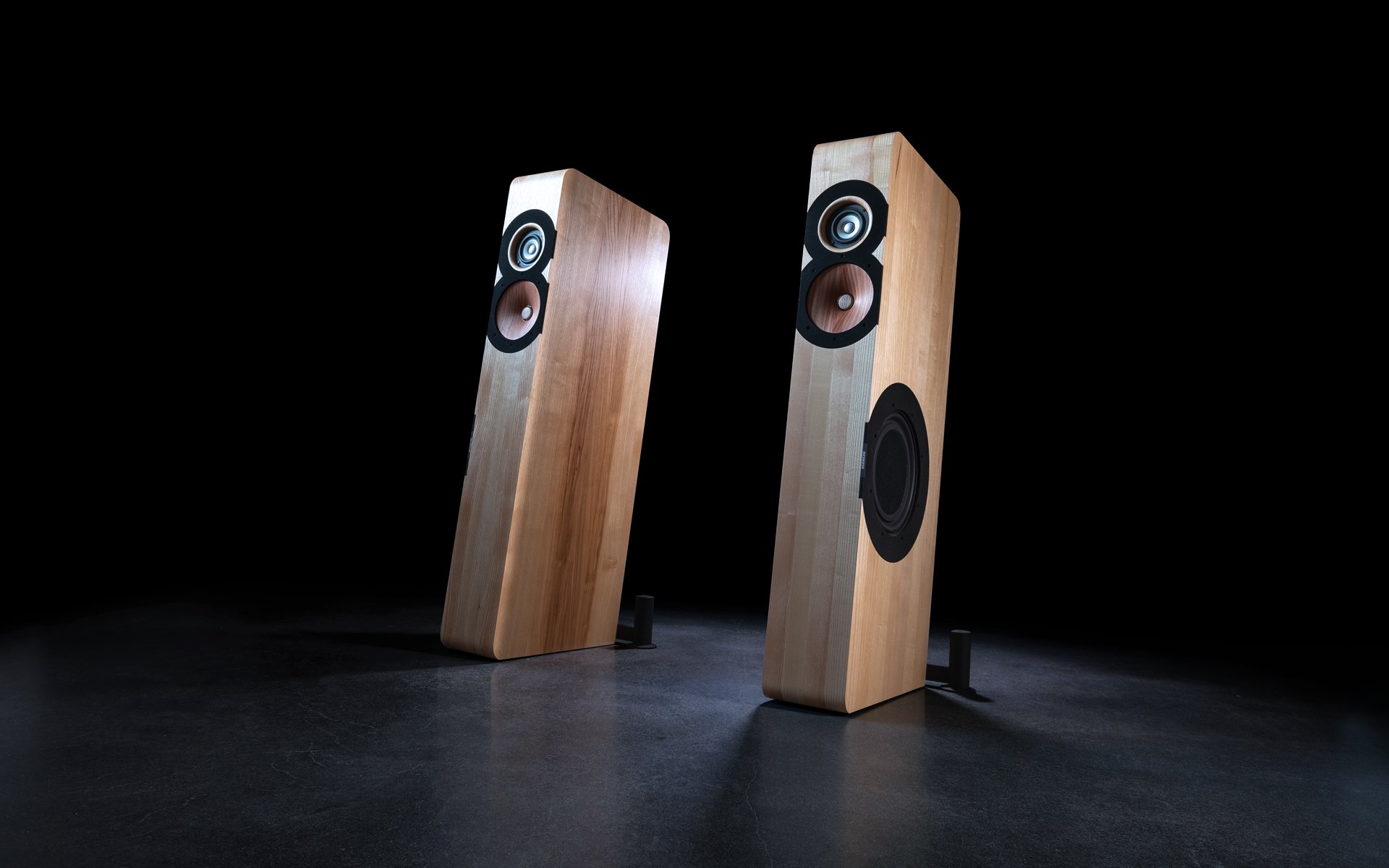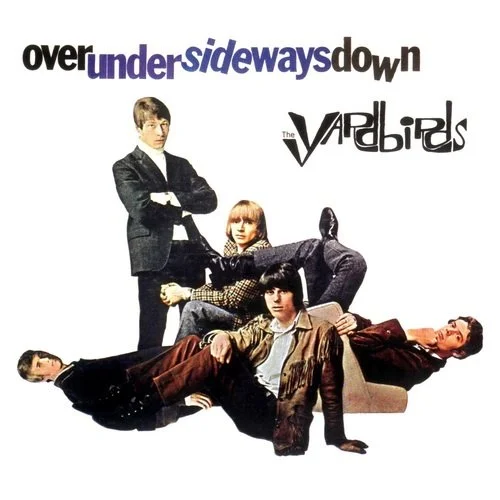BOENICKE AUDIO W11 SPEAKERS - REVIEW
BOENICKE AUDIO W11 SPEAKERS
Boenicke Audio is the brainchild of Sven Boenicke, and is based in Basel, Switzerland. Boenicke founded the company in 1998 with very modest goals, but has become one of the most unique hi-fi manufacturers in the industry for a number of reasons. The team shies away from trends; they make it their mission to avoid “me too” products, and take every aspect of design into account when building their loudspeakers, cables, and electronic components.
Their manifesto, as ascertained from interviews with Sven, is to strictly avoid cookie-cutter outsourced designs in favour of unique products that are “more than meets the eye.” One look at their speakers and it's clear that each is unique in appearance. We will discuss the design and technology below. Of note, Boenicke’s line of electronics is among the few on the market that are powered exclusively by batteries, except the small power amp.
The company also offers cables, a power conditioner, and most unusually, a room tuning device designed for corners. They also have a mysterious product called the ComDev. Note that Boenicke has a healthy distributor and dealer network across the globe.
We wanted to understand some of the thought processes and philosophies behind the designs so we read several print interviews with Sven Boenicke, as well as a video interview. It was clear to us that Sven is, as he says, an “out of the box” thinker. Sven has also been making his own recordings for a number of years, and he is intimately familiar with the sound of real concert halls. To label Sven a Renaissance man would not be an overstatement.
Boenicke shipped us a pair of their W11SE floor standing speakers all the way from Switzerland, The W11 sit smack in the middle of their speaker lineup, which starts with the W5 monitors and ends with the W22 flagship model. The W11SE pair arrived in a beautiful cherrywood finish. The “SE” edition of it features various upgrades from the standard version. The speakers are also available in American walnut, as well as several varieties of oak and ash.
The speakers offer an interesting driver complement. There is a 1” wide-band tweeter and a bass-midrange (without high pass filter) driver on the front baffle, and an additional “ambient” tweeter on the back panel. There are side-firing 10-inch woofers. The speakers can be set up with the woofers firing inward or outward, depending on the room and placement. There is a rear firing port as well.
Boenicke spent as much time designing the internal chambers of their speakers as they did designing the externals. They believe in isolation, proper routing, and stability. There is so much proprietary technology and so many ideas in the W11SE that it would take pages to discuss, so we would strongly advise visiting their website for a full overview. Interestingly, bass can be adjusted via jumpers in 2.5 dB increments, in a 10 dB range, via custom autoformers.
This is the “SE” version of the speaker (there is an “SE+” version as well, with further enhancements) as noted, and it features a number of add-ons not available in the standard version. Among these additions are the famous Bybee Quantum Purifiers, Mundorf silver-gold-oil capacitors, the proprietary Phase-Linearisation network, and several other accoutrements. The SE also comes standard with the Boenicke designed Swing Base, a unique way to situate the speaker and dissipate resonances, and presumably decouple the speakers from the floor.
Setup & listening
We set the W11SE up initially with the woofers firing inward, approximately eight feet apart. It was paired with an all tube Allnic system, a SOTA Comet VI turntable, and a Bryston DAC. Cabling was Clarus all around. We consulted with Sven, who suggested moving the speakers further apart, with the woofers firing outward. We ended with the speakers 12 feet apart, with substantial toe-in. This is further apart than we are accustomed to, but the sound stage “locked in” once they were set up this way. We also let the speakers play for a few hundred hours before critical listening. Our room features high ceilings, with the ability to allow for plenty of air around the enclosures.
Our initial impressions were quite interesting. We heard a staggering amount of recorded detail and ambient information. The first albums we streamed from our library were the Deluxe remasters of various Bad Company albums, including Bad Company, Straight Shooter, and Run With The Pack. The acoustic guitars were lush and silvery, the bass drum had more midrange detail than we have previously heard, and the reverb tails around Paul Rodgers’ vocal were amazingly apparent. The bass was not as warm as I am used to, but far more articulated. It was easy to hear the leading edge of the notes.
Next up was a bit of a left turn, and we streamed a number of albums by The Yardbirds, one of the most influential British groups of the 1960s. They pioneered the use of the studio as an instrument, employing off-kilter arrangements that included Gregorian chants, tabla, harpsichord, and the very earliest use of fuzz pedals by Jeff Beck.
One of their signature songs, “Heart Full of Soul,” features a bed of acoustic guitar and tabla, heavily reverbed vocals, and an amazing Eastern-flavoured fuzz solo by Beck. We heard the quaint production techniques far more clearly than we had before, where on most systems the song elements mesh into congealed sound. It was rather illuminating to hear the backing vocals and percussion so clearly. Same goes for tracks like “Still I’m Sad,” “Over Under Sideways Down,” and “Train Kept a Rollin’.”
The album that really locked us in with the W11SE was the DVD-A of Seal’s Best: 1991-2004, particularly the acoustic disc. It is an album we have heard on too many systems to count, including those costing nearly half a million dollars. Hearing the acoustic rerecording of “Bring It On” from Seal’s second album clinched the deal. We heard the rubbery bass line, the percussive acoustic guitar part, and Seal’s close- miked vocal with stunning presence. Namely, every breath, and every bass drum hit was so precise, and yet again the reverb trails on the vocal were studio quality “there.”
We also spun numerous LPs, using the superb Allnic H7000 tubed phono stage, and enjoyed the same musical energy and transparency to source. One of the records that really amazed us with the W11SE was a direct-to-disc pressing of the self-titled album by jazz legend Gary Bartz and UK-based ensemble Maisha, on the Night Dreamer label.
The music can best be described as spiritual jazz, with Bartz weaving his saxophone brilliantly in the arrangements, including trumpet, guitar, keyboards, and syncopated percussion. Recorded and cut to the master disc live, the music flows gracefully. The immediacy and sheer presence of the instruments through the W11SE were among the highlights of our time with the speakers.
We did not want to stick only with vintage recordings, so we listened to several new and outstanding albums we had recently downloaded. One was Tide, by Hilde, an all-female ensemble from Essen, Germany. The music is difficult to characterize, but let’s call it chamber jazz with classical overtones. The instrumentation consists of cello, violin, trombone, and vocals.
The textures of the cello and violin were simply outstanding with the W11SE, and the clear, naturally recorded voice was intimately rendered. The haunting track “Body” puts you right in the middle of the musicians, with violin and cello panned hard right and left, and plenty of room ambience. This music was incredibly immersive with the W11SE
Classical music was also well served by the W11SE. Orchestral pieces had weight and excellent layering. The differences in the various recording spaces and hall ambience came through as well. Scaling down to chamber music, the W11SE showed themselves to be quite refined in nature.
In interviews, Sven has talked about hearing music in “colours,” which is exactly how we listen to music. Music creates virtual sound paintings for us, and if we had to assign colours to the W11SE across a wide swath of music, we would describe it as “silvery,” “aqua,” and “turquoise.” For perspective, our Magnepans are “burgundy,” “maroon,” and “beige.” Hopefully, this will resonate with some listeners.
Conclusion
The Boenicke W11SE speakers are very special products. Sven Boenicke is clearly an accomplished and thoughtful man in the way he conducts his business and in the way his philosophies inform his designs. The W11SE was one of the most accurate, distortion-free speakers we have had in our systems to date. This is not a plug and play transducer. It does require some patience and experimentation to get it to play nice with the listening room, but it is worth the effort. They do like plenty of space around them, and are designed to be situated further apart than most speakers.
If you can accommodate them and partner them with top shelf gear, from source to cables, the rewards are plenty. The attention to detail is obsessive, and speakers can be ordered in wood finishes that will match any decor. But Boenicke does not make furniture, they make world-class loudspeakers. If accuracy, extremely low distortion, and musical satisfaction are your goals, the Boenicke should be very seriously auditioned.
Manufacturer & product information
BOENICKE AUDIO
Ramsteinerstrasse 17
4052 Basel
Switzerland
info@boenicke-audio.ch
Telephone: +41 (0)79 959 05 50
Boenicke W11 Loudspeaker: starting at $15,240 for the Standard version
Standard version
10″ long throw flat carbon fibre honeycomb bass driver, tuned to 27 Hz, first order crossover
6″ custom-made wood cone bass-midrange driver, 1st order low pass filter, no high pass filter, ash tree phase plug, magnet structure force fit mounted to the whole wooden mass of enclosure
3″ custom-made widebander, 1st order high pass filter, unique electromechanical 8-cm spiral parallel resonator installed
Bass level adjustable in 2.5 db increments using a custom-made super high quality autoformer
Internal wiring orientation-optimized silk-wrapped high-frequency stranded lit
WBT NextGen binding posts
Rear ambient tweeter
SE Version
16-cm parallel resonator at widebander
Added 16-cm parallel resonator to bass-midrange driver
Added latest generation Bybee Quantum Purifiers
Added proprietary phase linearization network
Mundorf Silver Gold Oil capacitor for widebander
Added Duelund Tinned Copper Foil 0.01 uF bypass capacitor
Swing Base included
SE+ Version
16-cm spiral resonator installed at widebander and bass-midrange driver both parallel and in series
Added Steinmusic Speaker Match Signature
One more Bybee Quantum Purifier added, now directly placed before positive driver terminal
Added Harmonix RF 5700 Tuning Bases to widebander
Mundorf Silver Gold Oil main capacitor for widebander, Duelund Silver Foil 0.01 uF bypass capacitor
Mundorf Silver Gold Oil capacitor for rear tweeter
C37 lacquer on rear side of wood cone and inner side of voice coil former
Swing Base included







